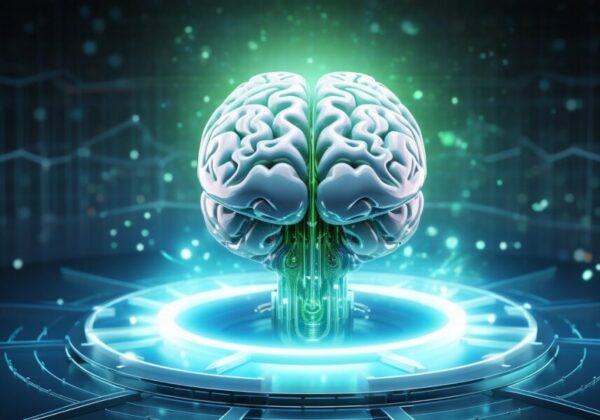The Uncharted Frontier of Neural Networks: Revolutionizing AI
Introduction:
As we stride into an era dominated by technological marvels, neural networks emerge as pivotal players in the realm of artificial intelligence (AI). Mimicking the intricate web of the human brain, these systems have reshaped our approach to data processing, decision-making, and human-machine interaction. This blog dives into the essence of neural networks, their groundbreaking applications today, and the limitless possibilities they hold for the future.
Decoding Neural Networks:
At their core, neural networks are sophisticated machine learning models designed to identify patterns and derive insights from data. They are structured into layers of interconnected nodes, resembling neurons, which process information in stages:
- Input Layer: The initial data entry point.
- Hidden Layers: Intermediate layers where data is processed and transformed.
- Output Layer: The final layer that delivers the network’s prediction or decision.
The strength of connections, or weights, between neurons adjusts through learning, enabling the network to enhance its performance over time.

Transformative Applications of Neural Networks:
Neural networks are already transforming multiple industries by offering unprecedented analytical and predictive capabilities.
- Healthcare Innovations: From early disease detection to personalized treatment plans, neural networks analyze complex medical data, improving diagnostic accuracy and patient outcomes. For instance, they can identify abnormalities in medical imaging with remarkable precision.
- Financial Intelligence: In finance, neural networks are pivotal for fraud detection, market prediction, and risk assessment. Their ability to swiftly process vast datasets makes them indispensable for real-time financial decision-making.
- Autonomous Vehicles: Self-driving cars leverage neural networks to interpret sensor data, navigate environments, and make real-time decisions, pushing the boundaries of automotive technology.
- Natural Language Processing (NLP): Neural networks power chatbots, virtual assistants, and translation services, enabling machines to understand and generate human language with increasing sophistication.
- Entertainment Personalization: Platforms like Netflix and Spotify use neural networks to analyze user preferences and provide personalized content recommendations, enhancing user experience.
Future Horizons of Neural Networks:
The potential of neural networks is vast and continually expanding. Future advancements promise even more profound impacts.
- Hyper-Personalization: Neural networks will drive deeper personalization in healthcare, education, and entertainment, tailoring experiences and services to individual needs with unparalleled precision.
- AI Synergy: Combining neural networks with other AI technologies, such as reinforcement learning and generative adversarial networks (GANs), will lead to more advanced and collaborative AI systems.
- Quantum Neural Networks: The intersection of quantum computing and neural networks could exponentially increase computational power, enabling solutions to currently unsolvable problems.
- Neuromorphic Hardware: Developing hardware that mimics neural networks’ architecture and functionality, known as neuromorphic computing, will create more efficient and powerful AI systems.
- Ethical AI: As neural networks become ubiquitous, ensuring their ethical application will be paramount. Future developments will focus on creating transparent, fair, and accountable AI decision-making processes.
Conclusion:
Neural networks are at the vanguard of technological advancement, revolutionizing diverse fields and heralding a new era of AI. From enhancing personalized services to pioneering cutting-edge computational techniques, their potential is immense. As we continue to explore and expand the capabilities of neural networks, we stand on the brink of a future where intelligent machines seamlessly integrate into our lives, solving complex problems and unlocking new opportunities. The journey of neural networks is just beginning, and the future holds infinite possibilities for innovation and discovery.
FAQs:
1. What are neural networks?
Neural networks are sophisticated computational systems modeled after the brain’s neural architecture and its processes.They consist of layers of interconnected nodes, or “neurons,” which process and transform data through complex algorithms to identify patterns, make decisions, or classify information.
2. How do neural networks learn and evolve?
Neural networks learn through a process called training, where they adjust the weights of connections between neurons based on feedback from their predictions. This involves algorithms such as backpropagation, which iteratively fine-tunes the network to reduce errors and enhance accuracy.
3. What types of neural networks exist?
Neural networks come in diverse forms, each optimized for different applications.
- Feedforward Neural Networks (FNNs): The basic type where data flows from input to output without loops.
- Convolutional Neural Networks (CNNs): Ideal for image and video analysis, using layers that detect and interpret visual features.
- Recurrent Neural Networks (RNNs): Suited for sequential data and time series, with feedback loops that handle temporal dependencies.
- Generative Adversarial Networks (GANs): Comprising a generator and a discriminator that compete to create and validate realistic data.
4. What are the real-world applications of neural networks?
Neural networks are transforming various industries:
- Healthcare: Enhancing disease diagnosis, medical imaging analysis, and treatment personalization.
- Finance: Detecting fraud, analyzing market trends, and managing financial risks.
- Automotive: Enabling self-driving cars to interpret sensor data and make autonomous decisions.
- Natural Language Processing: Driving advancements in chatbots, language translation, and emotion detection.
- Entertainment: Providing personalized recommendations on platforms like Netflix and Spotify.
5. How do neural networks manage large datasets?
Neural networks handle large datasets by leveraging their multi-layered architecture, which allows them to process and analyze complex data patterns. High-performance computing resources, such as GPUs, are often used to efficiently manage and compute extensive datasets.
6. What are the challenges of neural networks?
Neural networks face several challenges:
- Data Requirements: They need substantial amounts of data for effective training.
- Computational Demands: Training deep neural networks can be resource-intensive and time-consuming.
- Interpretability Issues: The internal workings of neural networks can be opaque, making it hard to understand their decision-making process.
- Risk of Overfitting: They may overfit to training data if not properly regularized, impacting their ability to generalize to new data.
7. What does the future hold for neural networks?
The future of neural networks looks promising with several exciting developments:
- Advanced Personalization: Greater precision in customizing services across different sectors.
- AI Integration: Combining neural networks with other AI technologies for more sophisticated systems.
- Quantum Computing: Potential leaps in computational power with the advent of quantum neural networks.
- Neuromorphic Hardware: Creation of hardware that mimics neural networks to boost efficiency.
- Ethical AI: Progress towards creating more transparent and accountable AI systems.
8. How can I start working with neural networks?
To dive into neural networks, consider the following steps:
- Study the Basics: Get a solid grasp of machine learning fundamentals and neural network concepts.
- Take Online Courses: Platforms like Coursera, Udacity, and edX offer comprehensive courses on neural networks.
- Experiment with Frameworks: Use tools like TensorFlow or PyTorch to build and experiment with your own neural networks.
- Engage with the Community: Join forums and discussion groups to stay informed and get support from other enthusiasts.




